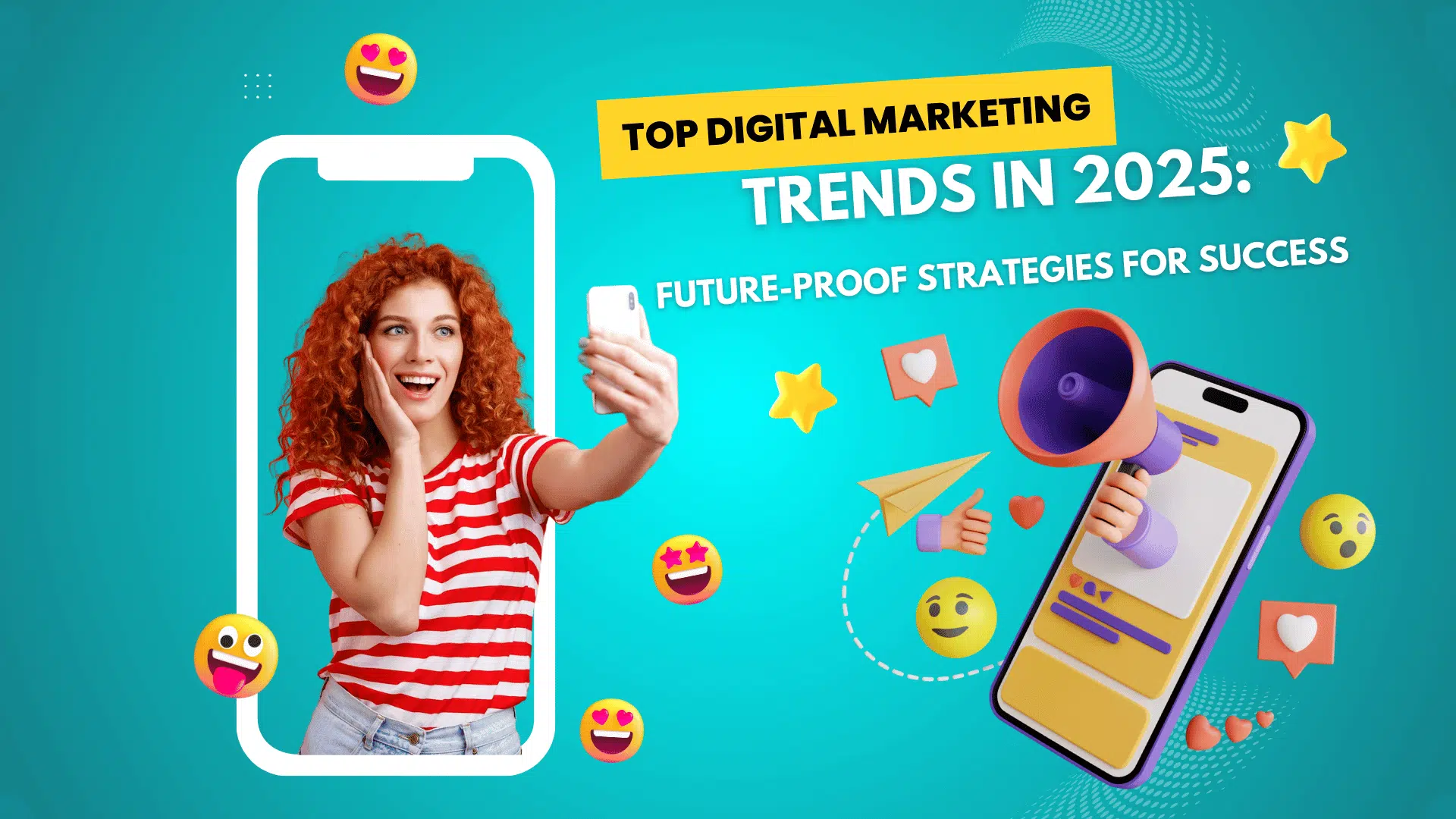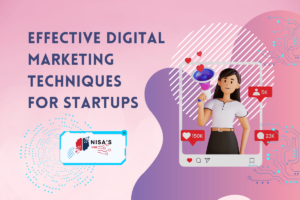Hi, I’m Nisa! As the digital landscape evolves, staying ahead of the latest trends in digital marketing is essential to ensure your business thrives. In 2025, the future of marketing will be shaped by new technologies, changing consumer behaviors, and innovative strategies. In this article, I’ll explore the top digital marketing trends in 2025 and how you can implement future-proof strategies for continued success.
1. AI-Powered Personalization and Automation
Artificial Intelligence (AI) is no longer just a buzzword; it’s becoming an integral part of digital marketing strategies in 2025. From personalizing user experiences to automating customer interactions, AI offers a wide range of opportunities to enhance marketing efforts.
Why it matters:
- AI-driven personalization allows businesses to deliver highly tailored content, product recommendations, and marketing messages based on individual behaviors and preferences.
- Marketing automation powered by AI can streamline repetitive tasks like email campaigns, social media management, and customer service, freeing up time for strategic work.
- Predictive analytics: AI can analyze vast amounts of data to predict customer behavior and trends, allowing marketers to make more informed decisions.
How to leverage this trend:
- Use AI for customer segmentation: Divide your audience into segments based on their behavior, preferences, and purchase history to provide highly targeted content.
- Implement AI-driven chatbots: Provide 24/7 customer support, answer questions, and help guide users through their buying journey.
- Adopt AI tools for content generation: Use AI-powered platforms to generate blog posts, social media content, and email copy that resonates with your audience.
2. Voice Search Optimization
As the use of voice-activated assistants like Amazon Alexa, Google Assistant, and Siri continues to rise, optimizing for voice search is more important than ever. In 2025, businesses will need to adapt their SEO strategies to account for voice-based queries.
Why it matters:
- Voice search is growing rapidly: Voice searches are expected to account for a significant portion of online searches by 2025, making it crucial for businesses to optimize their content.
- Natural language queries: Voice searches tend to be more conversational, meaning businesses need to adapt their content to match how people speak.
- Local search optimization: Many voice searches are location-based, so businesses must optimize for local SEO to appear in voice search results.
How to leverage this trend:
- Optimize for long-tail keywords: Focus on phrases and questions that users are likely to ask conversationally, such as “best Italian restaurants near me” or “how to fix a broken sink.”
- Implement structured data: Use schema markup to help search engines understand your content and improve your visibility in voice search results.
- Optimize for mobile: Since voice searches are often performed on mobile devices, ensure your website is mobile-friendly and fast-loading.
3. Video Marketing and Live Streaming
Video marketing continues to dominate as a key content format in 2025. With the rise of short-form videos on platforms like TikTok and Instagram Reels, as well as the ongoing popularity of live streaming, video will remain at the forefront of digital marketing strategies.
Why it matters:
- Higher engagement: Video content generally sees higher engagement rates compared to text or images, making it a powerful tool for building brand awareness and customer loyalty.
- Authenticity: Live streaming offers an authentic and real-time way to connect with your audience, answering questions, showcasing products, or hosting Q&A sessions.
- Increased reach: Video is more shareable across social media platforms, helping businesses expand their reach and increase brand exposure.
How to leverage this trend:
- Create short-form videos: Post engaging, bite-sized videos on platforms like TikTok, Instagram Reels, and YouTube Shorts to reach younger, mobile-first audiences.
- Host live streams: Use live streaming to showcase behind-the-scenes content, launch products, or engage with your audience in real-time.
- Use video ads: Invest in video ads on social media platforms to increase visibility and drive traffic to your website.
4. Augmented Reality (AR) and Virtual Reality (VR)
In 2025, AR and VR technologies will continue to shape the way consumers experience products and services. From virtual product try-ons to immersive brand experiences, AR and VR offer businesses new ways to engage with customers and drive conversions.
Why it matters:
- Immersive experiences: AR and VR allow customers to interact with products or services before making a purchase, which enhances their decision-making process.
- Higher engagement: These technologies provide a more engaging and memorable experience for consumers, which can lead to increased brand loyalty and repeat purchases.
- Visualizing products: AR helps customers visualize how products will look in their environment, such as trying on clothes virtually or placing furniture in their homes.
How to leverage this trend:
- Implement AR in e-commerce: Allow customers to try on products virtually using their phone camera, such as trying makeup or seeing how furniture fits in their space.
- Create VR experiences: Offer virtual tours or product demonstrations to engage customers in a fully immersive environment.
- Interactive ads: Use AR/VR in ads to create unique, interactive experiences that attract customers and increase brand engagement.
5. Privacy and Data Protection
With growing concerns over privacy, data protection will remain a key focus in 2025. As consumers demand more transparency and control over their data, businesses must ensure they’re compliant with data privacy regulations like GDPR and CCPA.
Why it matters:
- Building trust: Consumers are more likely to engage with brands that prioritize their privacy and data security.
- Regulatory compliance: Businesses must comply with ever-increasing data protection laws to avoid penalties and maintain consumer trust.
- Data transparency: Customers want to know how their data is being collected and used. Being transparent about this builds confidence and long-term loyalty.
How to leverage this trend:
- Be transparent: Clearly communicate how you collect and use customer data in your privacy policy and marketing materials.
- Ensure data security: Implement robust cybersecurity measures to protect customer data and prevent breaches.
- Provide customer control: Allow customers to manage their data preferences and give them the ability to opt-out of unnecessary data collection.
6. Social Commerce and Shoppable Posts
Social commerce continues to grow in 2025, with platforms like Instagram, Facebook, and Pinterest enabling businesses to sell products directly on their social media profiles. This trend allows consumers to discover and purchase products without leaving their favorite platforms.
Why it matters:
- Seamless shopping experience: Social commerce makes it easy for users to buy products directly from social media platforms, increasing convenience and reducing friction in the purchase process.
- Increased conversions: By enabling direct shopping, social commerce simplifies the buying journey and can drive higher sales and conversions.
- Increased engagement: Social media platforms are where people spend the most time, making them the perfect place to promote products and engage with potential customers.
How to leverage this trend:
- Set up shoppable posts: Tag your products in posts and stories to allow users to purchase directly from your social media accounts.
- Collaborate with influencers: Work with influencers to promote your products through shoppable posts and sponsored content, driving direct sales.
- Run social media ads: Use Facebook Ads and Instagram Ads to target potential customers and drive them to your shoppable posts.
7. Subscription Models and Memberships
Subscription-based models are becoming increasingly popular, and 2025 will see more businesses moving toward this model. Whether it’s for products, services, or content, subscriptions provide businesses with steady, recurring revenue while offering customers convenience and personalized experiences.
Why it matters:
- Predictable revenue: Subscription models offer a steady stream of income, which helps with long-term financial planning and stability.
- Customer loyalty: By offering value and convenience, subscriptions build long-term relationships with customers, encouraging repeat business.
- Personalization: Subscription services allow businesses to tailor offerings to individual customer preferences, increasing satisfaction and engagement.
How to leverage this trend:
- Offer subscription boxes: Provide curated products on a regular basis, such as beauty boxes, food delivery services, or fitness gear.
- Create a membership program: Offer exclusive content, discounts, or perks for subscribers, building loyalty and encouraging repeat purchases.
- Leverage customer data: Use insights from your subscribers to personalize their experience and improve retention.
Future-Proofing Your Digital Marketing Strategy
In 2025, digital marketing will be defined by innovation, personalization, and customer-centric strategies. By embracing emerging technologies like AI, voice search, AR/VR, and social commerce, businesses can stay ahead of the curve and continue to engage and convert their audience.
To stay competitive, focus on personalization, customer experience, and data privacy. By adapting to these trends and integrating them into your strategy, you can future-proof your business and ensure long-term growth and success.




